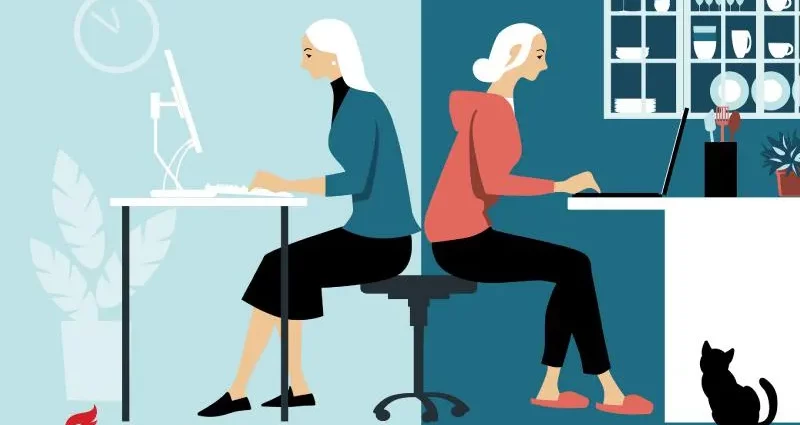WEDNESDAY, April 27, 2022 (American Heart Association News) — First, we got advice on staying fit and healthy while working in the office. Then when the pandemic started, we got advice on staying fit and healthy while working from home.
As the era of hybrid work – doing the same job in both places – takes hold, now what?
There are a lot of health tradeoffs, said Shawn Roll, an occupational therapist and associate professor at the University of Southern California in Los Angeles who researches workplace health. “You can get a lot of benefits from both, but also a lot of potential problems and concerns. There has to be a balance.”
A Gallup poll last fall showed 45% of full-time employees worked at home either all or part of the time, including 67% of white-collar workers. Of those working remotely, 54% hoped to keep their hybrid arrangement, splitting time between home and office.
One of them is Dr. Jeffrey Harris, a professor in the department of health systems and population health at the University of Washington in Seattle.
“I usually go in three days a week and work at home two days a week,” he said. “I’m certainly just as productive, and I don’t miss the commute. But I do miss the human interaction.”
At least for some people, that’s one of the tradeoffs. A February report from the World Health Organization warned the isolation of working at home can lead to burnout and depression, and urged employers to promote healthy work environments as well as support for home workers.
Working alone instead of in an office can affect health in both directions. Not having a supervisor or workplace rules, Harris said, could leave someone free to drink alcohol or smoke more than before. That fridge just a few steps away could be a source of healthy food – or easily accessible junk. But a home setting could offer more flexibility to take breaks, get up and move around, a key factor in countering the bad effects of sedentary desk work.
Even the commute can cut both ways. While people may enjoy the time saved by not trekking to the office, Roll said his survey data show some would rather make the trip.
“For a lot of people, it’s a nice clean break and a transition between home and work, creating a boundary between them,” he said. “At home there’s the question of when the workday ends, and does the employer think you’re available 24/7.”
Wherever work gets done, both experts stressed healthy habits to keep in mind:
- Interacting with coworkers, whether in person or virtually, helps defuse anxiety and stress.
- Creating a healthy workspace, with quality chairs, good lighting and an ergonomically designed setting, is important whether at the office or the kitchen table. “People lying on the couch all day with a laptop tend to have more problems,” Roll said. “It can strain the eyes and put you in a terrible posture.”
- Sitting anywhere for too long is a bad idea. “Get up and stretch and take exercise breaks,” Harris said. “And pay attention to the things that can pose health risks, like drinking and smoking and proximity to the refrigerator.”
If hybrid work is here to stay, Roll hopes employers help make the home workspace as effective as possible.
“They need to be cognizant that every employee has a different home situation with different resources,” he said. “It’s not just the work and what’s best for the business, it’s also about supporting employee health and well-being.”
Hybrid workers, meanwhile, need to look out for themselves.
“Get a sense of who you are, how you’re feeling both physically and mentally, and how and where you work best,” Roll said. “Try to organize your work life to be the most productive and the most healthy.”
American Heart Association News covers heart and brain health. Not all views expressed in this story reflect the official position of the American Heart Association. Copyright is owned or held by the American Heart Association, Inc., and all rights are reserved. If you have questions or comments about this story, please email editor@heart.org.
By Michael Precker, American Heart Association News
Copyright © 2025 HealthDay. All rights reserved.

